When the summer heat begins to fade, you’ll notice certain bugs seeking warm spots to overwinter. These bugs belong to the stink bug family and are known as boxelder bugs (or box bugs).
They tend to invade homes during the colder months. Therefore, if you suddenly find yourself dealing with a swarm of these insects, read on to learn how to keep these annoying bugs away from your home. But first, let’s learn more about these bugs.
- What Are Boxelder Bugs and What Do They Look Like?
- Where Do Boxelder Bugs Originate From?
- What Do Boxelder Bugs Eat?
- What is the Lifecycle of the Boxelder Bug?
- Are Boxelder Bugs Harmful?
- 10 Ways to Get Rid of Boxelder Bugs for Good
- How to Prevent Boxelder Bugs in the First Place
- Get Rid of Boxelder Trees
- How to Kill Boxelder Bugs With a Vacuum
- Use a Garden Hose
- An Insecticide Will Help With Boxelder Bug Control
- Spray Hot Water
- Control a Boxelder Bug Swarm With Pyrethrin
- Sprinkle Borax or Diatomaceous Earth
- Physically Capture Boxelder Bugs
- Natural Bug Deterrants
- Time for Boxelder Bugs to Bug Off!
- Most Asked Questions About Boxelder Bugs
What Are Boxelder Bugs and What Do They Look Like?
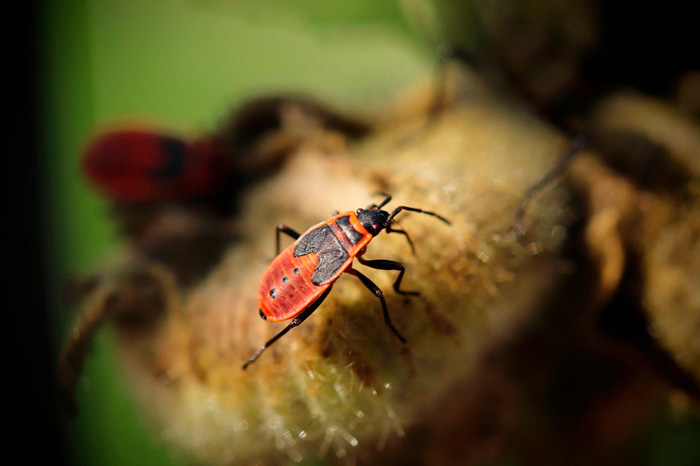 Image credits: Nennieinszweidrei
Image credits: Nennieinszweidrei
A boxelder bug (Boisea trivittata) belongs to the Hemiptera order of insects, making it a ‘true bug.’ This means that boxelder bugs have piercing and sucking mouthparts. These insects get their name from the boxelder tree that they feed on. Although these bugs don’t pose a severe problem, they can become a nuisance during the cold season by entering your home in large numbers.
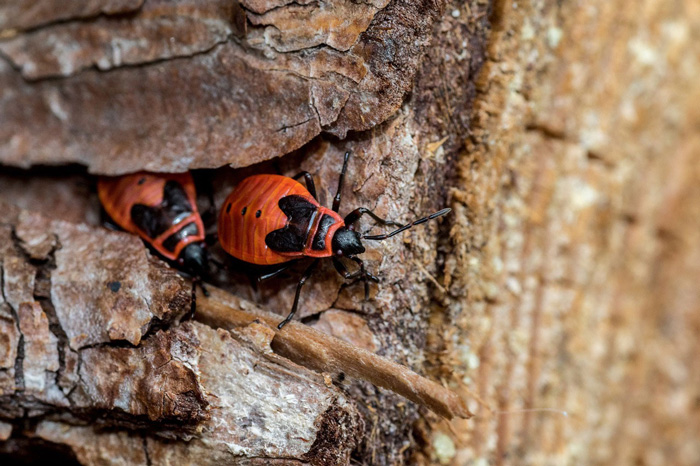 Image credits: MelaniMarfeld
Image credits: MelaniMarfeld
Adult boxelder bugs are about half an inch long. They are black with orange or red markings on their back and have three stripes on the area behind their prothorax. Their wings are flat and overlap to form an ‘x’ shape. Their bodies are shaped like long ovals with six legs and two antennae.
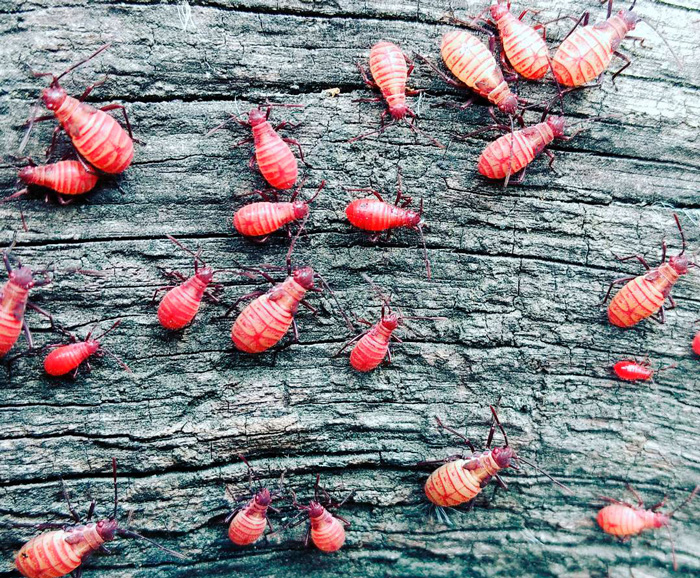 Image credits: davidjmidgley
Image credits: davidjmidgley
Nymphs are immature boxelder bugs. They look similar to adult insects but are bright red when they hatch and eventually turn black. These bugs are 1/16th of an inch long. You are less likely to come across nymphs in real life.
Did You Know?
Boxelder bugs are often confused with beetles or milkweed bugs. However, beetle wings form a straight line and don’t cross to create an ‘x’ shape. On the other hand, milkweed bugs have similar color patterns as boxelder bugs but are brighter red.
Where Do Boxelder Bugs Originate From?
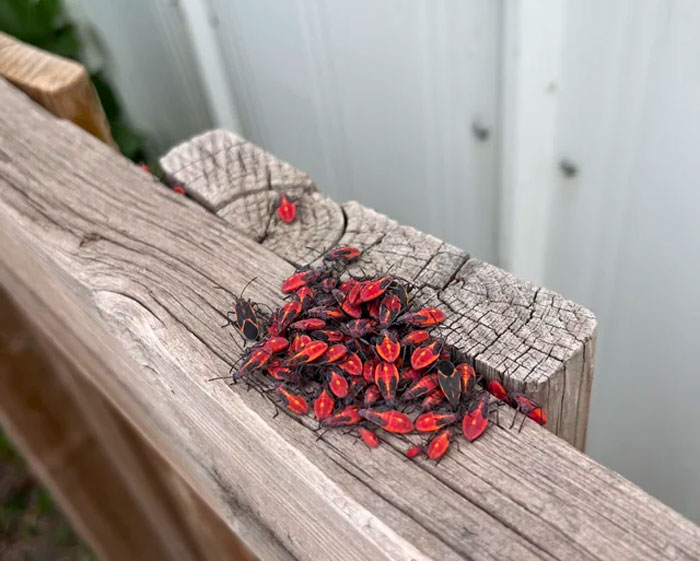 Image credits: Kilbourne
Image credits: Kilbourne
Boxelder bugs are primarily found in the Western part of the United States. But they can also be found in Eastern Canada and throughout Nevada’s Western and Eastern portions. They congregate wherever boxelder trees are found.
What Do Boxelder Bugs Eat?
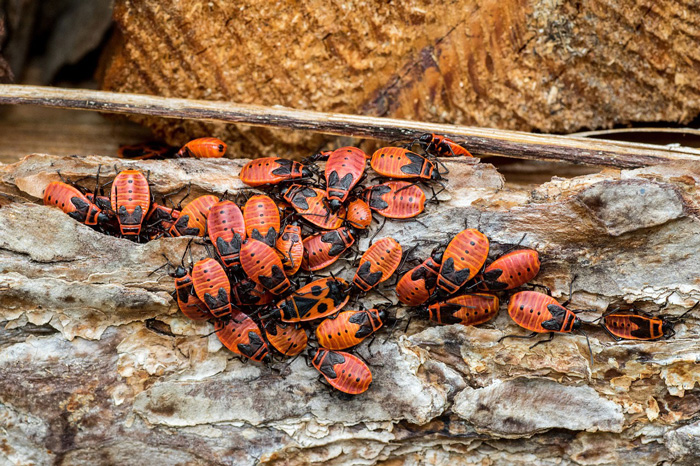 Image credits: MelaniMarfeld
Image credits: MelaniMarfeld
Boxelder bugs primarily feed on the seeds, leaves, and flowers of boxelder trees (Acer negundo), hence their name. While they consume fallen seeds, they are also known to gather in clusters and feed on newly developed leaves, flowers, and seeds of female boxelder trees and maple trees. Sometimes, they also feed off the male boxelder trees or fruit and ash trees. This behavior is less common.
What is the Lifecycle of the Boxelder Bug?
Boxelder bugs can produce 1–3 generations every year, yet they have a lifespan of just one year. The boxelder tree buds open when the weather starts warming up in late April or early May. This is when the bugs emerge from hibernation, searching for shelter and nourishment.
Egg
During the springtime, female boxelder bugs lay eggs in crevices on the tree bark or leaves. They can produce up to 200–300 eggs at once. These eggs take 10–14 days to hatch.
Nymph
After several days, the eggs hatch, and the emerging nymphs can be found in the nearby vegetation. Nymphs might be present in the fall, but only fully grown adult boxelder bugs can survive the winter.
Adult
You might start finding adult boxelder bugs in your home between August and September when they search for protected areas to stay during the winter. They prefer warm and dry places, often found in attics or ditches. Since they can fly, they might travel as far as two miles.
Once the colder months have passed, the bugs wake up from hibernation and become active. That’s when you will notice large swarms around your home. Seeing so many bugs at once might be scary!
Are Boxelder Bugs Harmful?
These bugs aren’t considered dangerous or harmful to humans or pets. They don’t bite or sting, and they don’t transmit diseases. However, they can become a nuisance when they enter homes in large numbers, seeking warmth during cooler months. Here are a few things you should know about them.
The Effect of Boxelder Bugs on Outdoor Areas
If there is an infestation of boxelder bugs outside your home, they can cause fruit and leaf deformities in the plants they feed on. The leaves might turn slightly yellow and crinkle due to the bugs’ sap-sucking behavior. Additionally, fruits might lose their aesthetic appeal, which can be troublesome, especially in orchards. Despite these issues, plants can generally survive a boxelder beetle swarm.
The Effect of Boxelder Bugs on Indoor Areas
They don’t cause property damage, but their feces might leave a reddish stain on light-colored surfaces. They also release an unpleasant smell when crushed. Since they congregate in large numbers, they can be a source of filth, which is undesirable. Even though boxelder bugs aren’t poisonous, keep them away from your pets because they taste foul and can upset their stomachs.
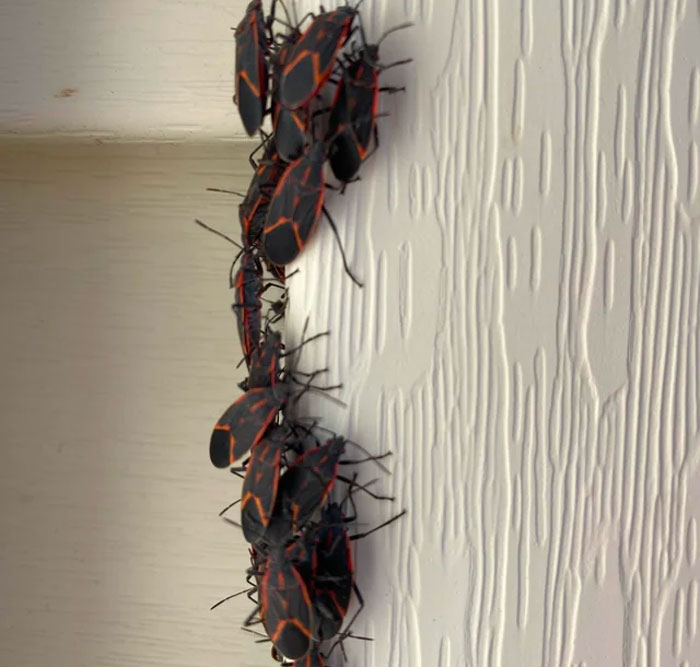
Image credits: DonGold60
10 Ways to Get Rid of Boxelder Bugs for Good
Here are a few valuable tips to kill boxelder bugs and keep them from returning to your house. Whether you’re dealing with an infestation inside your home or outdoors, these steps will help you keep boxelder bugs away.
However, before you get rid of boxelder bugs, remember to
❗wear appropriate safety gear such as heavy-duty gloves, a dust mask, long pants, a long-sleeve shirt, and eye goggles;
❗carefully read instructions on the labels of insecticides and sealants;
❗keep a trash bag ready to collect dirt and dead boxelder bugs.
How to Prevent Boxelder Bugs in the First Place
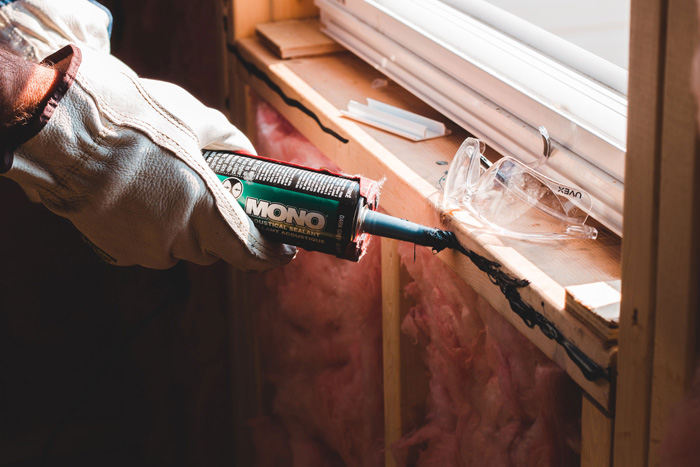 Image credits: Erik Mclean
Image credits: Erik Mclean
Prevent boxelder bugs from finding a way inside by closing any possible entryways. Use good-quality silicone or caulk to seal cracks and crevices around your windows, screen off vents and roof openings, and check for spaces near gas or plumbing structures. The bugs’ flat bodies allow them to squeeze through cracks easily, so ensure all possible entryways are closed.
Regularly inspect sites where boxelder bugs might hide. Clear up fallen plant leaves or sticks as often as possible to keep these bugs away. You can also swap out the plants that attract boxelder bugs, such as maple, elm, ash, and boxelder trees.
Get Rid of Boxelder Trees
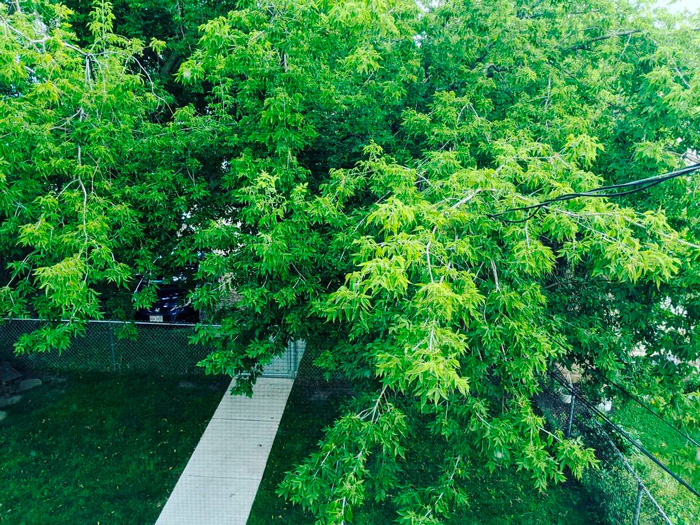 Image credits: tsparks31
Image credits: tsparks31
If you have this tree on your property, consider cutting it down and planting another tree instead. If you’re struggling with how to get rid of boxelder bugs permanently, this might just be the hack you’re looking for.
A less drastic measure is to trim the plant regularly and collect the seed pods as they fall. These unusual bugs can also travel as far as two miles. Consider a permanent community-wide solution if these trees are widespread in your locality.
How to Kill Boxelder Bugs With a Vacuum
 Image credits: Anete Lusina
Image credits: Anete Lusina
Boxelder bugs release an unpleasant odor when crushed, so it’s best to kill them without squishing them. A vacuum cleaner is your best bet to eliminate these stink bugs. Also, don’t leave dead bugs lying around because they attract larders and carpet beetles.
Once you’ve collected all the beetles, empty your vacuum into a bag with a quarter inch of soapy water. This will suffocate the bugs. Throw the bag away immediately. Clean the areas where you found the bugs so that no stink lingers.
Use a Garden Hose
 Image credits: Karolina Grabowska
Image credits: Karolina Grabowska
Get rid of boxelder bugs outside by spraying them with lots of water. You can find these insects in clusters on trees or on the sunny side of your house. Take your garden hose and spray them hard to convince them to disappear.
An Insecticide Will Help With Boxelder Bug Control
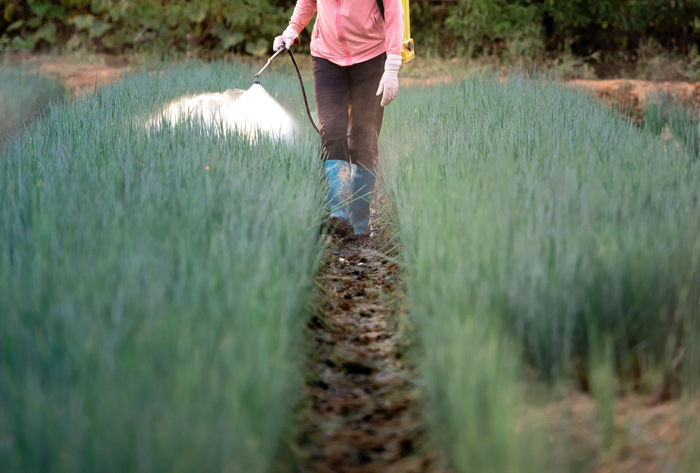 Image credits: Tran Nam Trung
Image credits: Tran Nam Trung
It’s essential to know how to get rid of boxelder bugs outside. You can wipe out a swarm by using an insecticide. The spray bottle should have chemicals like bifenthrin, cyfluthrin, and deltamethrin, and mention boxelder bugs on the label.
Spray the insecticide around the perimeter of your home around late summer or early fall for the best results. The issue with using insecticides repeatedly is that boxelder bugs get immune to the formula. In such cases, use pesticides as a last resort.
❗Remember to follow all the safety precautions mentioned on the spray’s label and keep it out of reach of children and pets.
Spray Hot Water
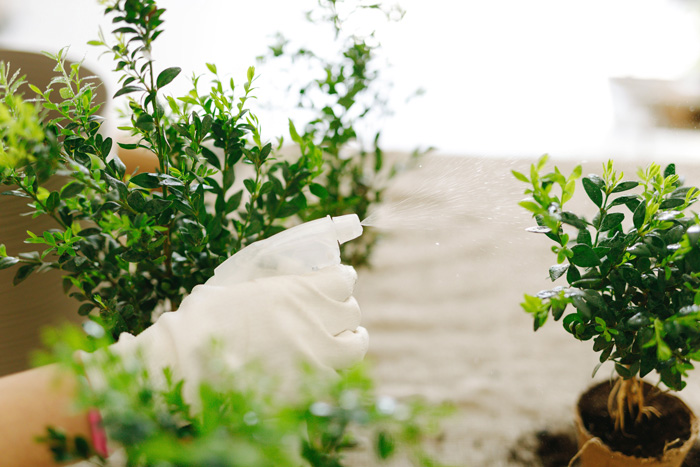 Image credits: Thirdman
Image credits: Thirdman
An easy pest control method is to kill the bugs with hot water. Boxelder bugs will die if their thermal threshold is exceeded. You must spray water heated to 160–180°F. Be careful with this method because you can get hurt or burnt.
Control a Boxelder Bug Swarm With Pyrethrin
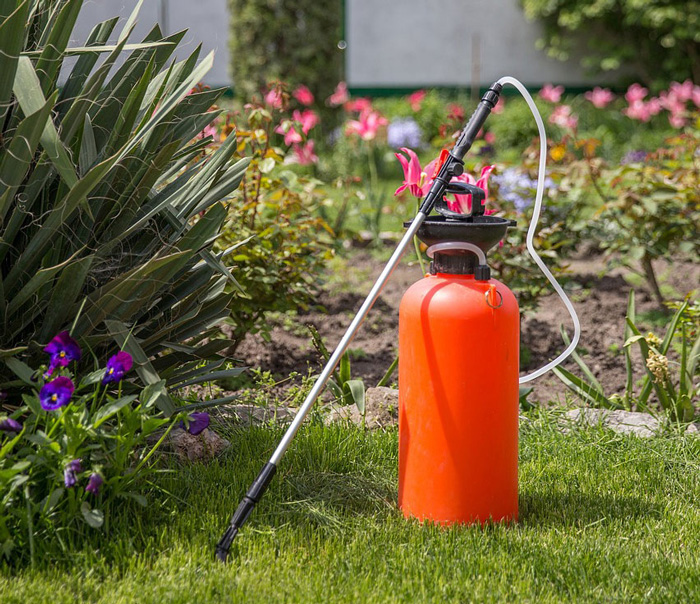 Image credits: Mariakray
Image credits: Mariakray
Pyrethrin is an insecticide that is naturally found in chrysanthemum flowers, and it helps kill boxelder beetles. Spray the outside of your house to clear any boxelder bug infestation quickly. You can also apply it to cracks and holes where you think the insects might hide.
Don’t spray this chemical on your plants or lawn because it can stunt their growth. You can also use it to control the spread of other insects, such as mosquitoes, fleas, flies, moths, and ants.
RELATED: Everything You Need to Know About Yellow Ladybug
Sprinkle Borax or Diatomaceous Earth
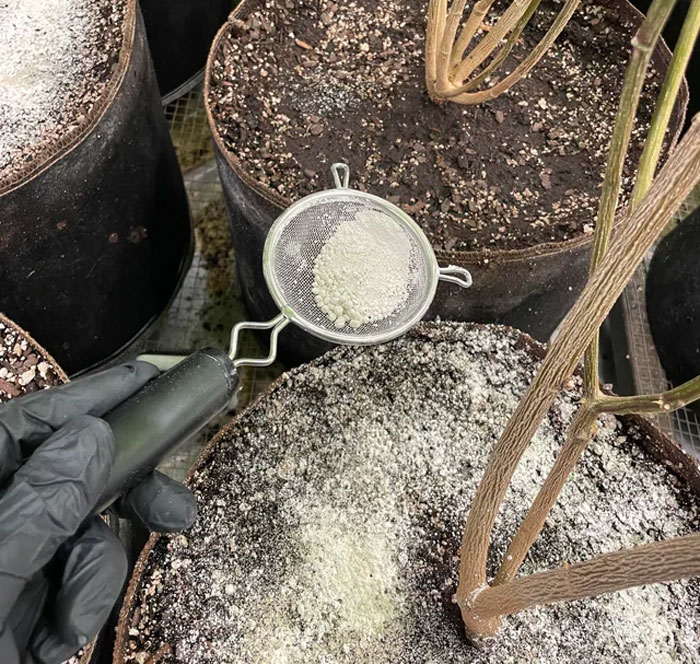 Image credits: BeatBoxinDaPussy
Image credits: BeatBoxinDaPussy
Rid your home of boxelder bugs with the help of Diatomaceous earth. It is a natural and organic insecticide. It looks like fine powder to humans, but under a microscope, the diatoms are covered in spiny ridges that can cut into the exoskeletons of boxelder bugs. This causes them to lose fluids and eventually dry out or die. Boric acid also kills boxelder bugs by disrupting their digestive processes and damaging their nervous system.
Use these powders to naturally get rid of boxelder bugs outside. Sprinkle them on entry points such as doorways and windowsills. Diatomaceous earth, in particular, is a non-toxic substance that is safe for pets and humans.
Physically Capture Boxelder Bugs
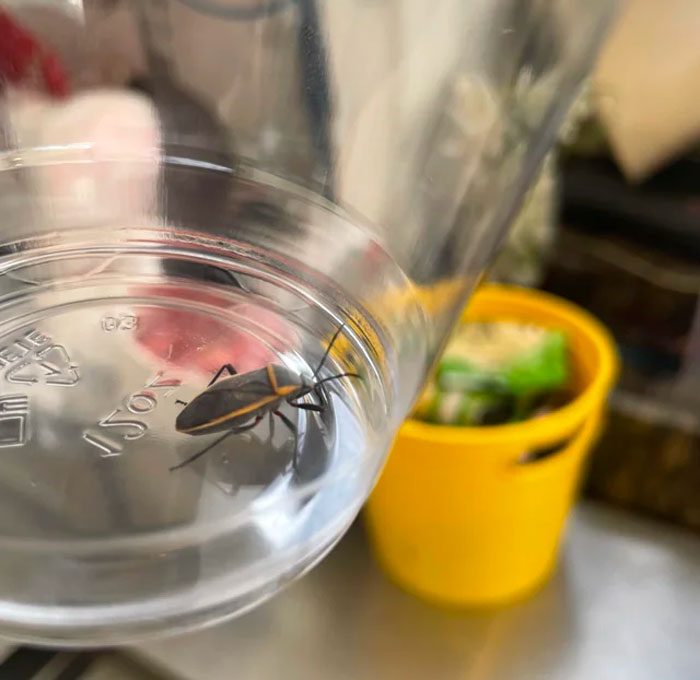 Image credits: reddit.com
Image credits: reddit.com
If you hate bugs, this will be difficult because it might involve close contact with boxelder beetles. This method entails capturing them in jars, on sticky pads, or glue traps, after which you will need to release them far away from your home. Be careful not to squash the bugs, or else they will release an unpleasant smell.
Natural Bug Deterrants
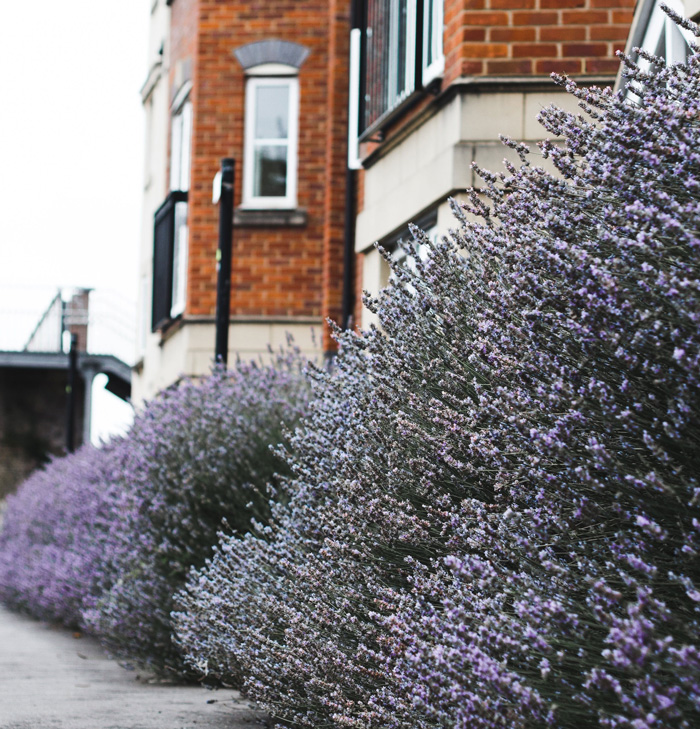 Image credits: Vladimir Gladkov
Image credits: Vladimir Gladkov
In addition to these remedies, certain plants can prevent boxelder bugs from returning. Mums flowers, citrus plants, and citrus oils emit scents that repel boxelder bugs. Consider planting these trees or using their oils in areas where the bugs congregate. Herbs like sage, cloves, and lavender can also reduce the likelihood of a boxelder bug infestation.
RELATED: 20 Best Herbs To Grow At Home (Even If You’re A Total Beginner)
Time for Boxelder Bugs to Bug Off!
Although boxelder bugs don’t bite or cause damage, it’s best not to let these insects infest your garden or home. Hence, utilize the ways above to get rid of boxelder bugs once and for all because they certainly aren’t paying you rent! Let us know whether you found any of these tips helpful, and share this article with a neighbor who might be struggling with the same issue. Keeping with the bugs theme, here are some quirky insect cartoons to make you laugh!
Most Asked Questions About Boxelder Bugs
How to Get Rid of Female Boxelder Trees?
Female boxelder trees are the preferred breeding grounds for boxelder bugs, so removing them can help prevent the insects from returning. You can cut the trees down to a stump with the help of a mulcher. It will then be easier to remove the stump and roots mechanically.
Do Boxelder Bugs Bite?
Boxelder bugs don’t bite but might pierce the skin as a defensive attack if provoked. This is similar to a mosquito bite and only causes minor irritation to the skin. Boxelder beetles also can’t sting because they don’t have stingers.
What Kills Boxelder Bugs?
You can kill boxelder bugs by drowning them in soapy water, using boric acid or Diatomaceous earth, spraying pesticides like Pyrethrin, and throwing boiling water on them.
What Does Dish Soap Do to Boxelder Bugs?
You can make a boxelder bug-killing spray with water and dish soap. This solution breaks down the bugs’ outer shells, which can cause them to dehydrate and die. You can also drown them in a bucket of soapy water.
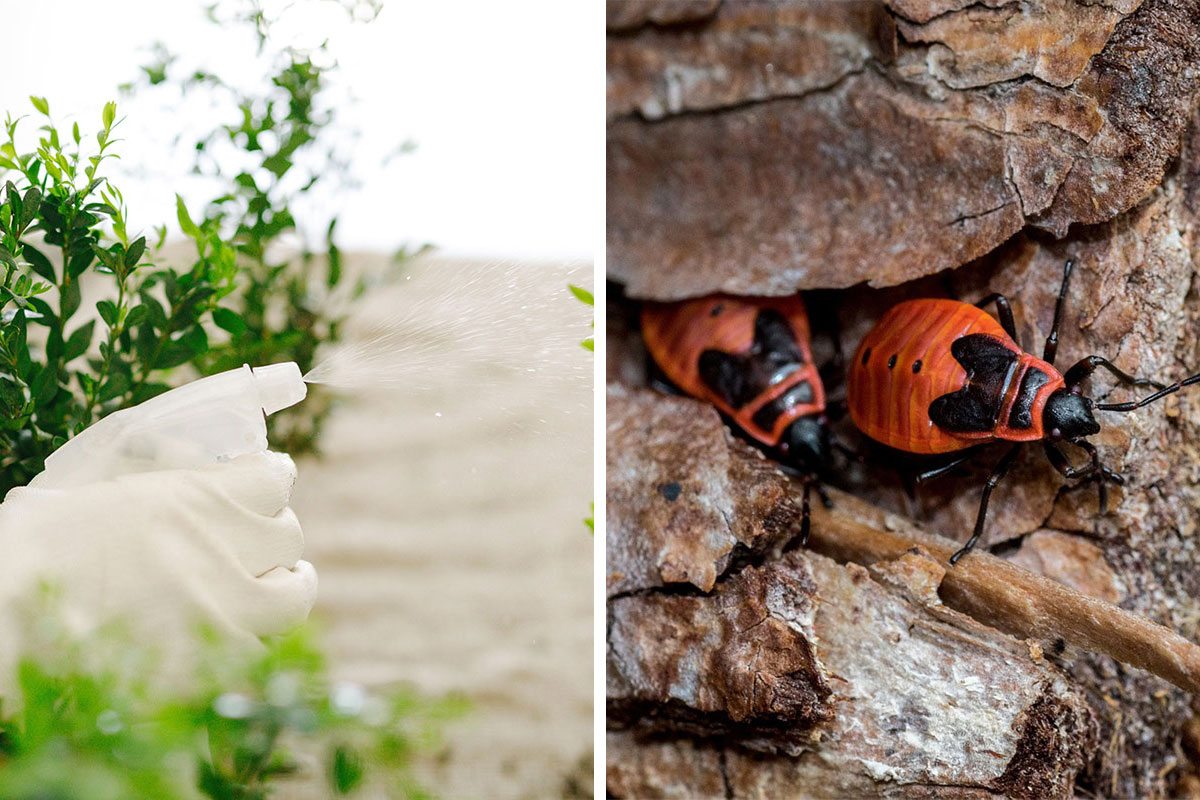
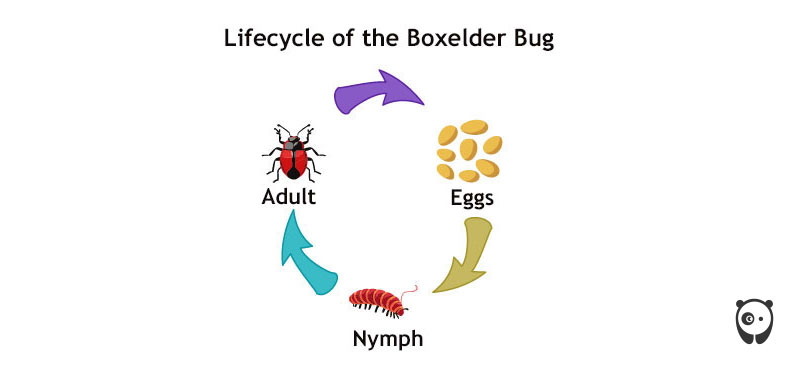






11
0